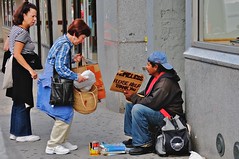| 8340736451 | Fundamental Counting Principal | "How many ways?" | | 0 |
| 8340736452 | Fundamental Counting Principal | certain procedure (P) can be broken into a number (n) of successive ordered stages - S subscript r = n ways | | 1 |
| 8340736453 | permutation | An r-permutation of a set of n elements is an ORDERED selection of r elements from the set of n elements (Hint: If the things being chosen will do (or have done to them) different things, it's a permutation.) | | 2 |
| 8340736454 | permutation key words | officers, place, arranged, line up | | 3 |
| 8340736455 | permutation formula | |  | 4 |
| 8340736456 | combination | The number of combinations of n elements taken at r at a time; ORDER DOES NOT MATTER
(Hint: If the things being chosen are going to do (or have done to them) the same thing, it's a combination) | | 5 |
| 8340736457 | combination key words | team, group, commitee | | 6 |
| 8340736458 | combination formula | |  | 7 |
| 8340736459 | sample space | the collection of all possible outcomes of a chance experiment (Example: roll a die, S={1, 2, 3, 4, 5, 6} | | 8 |
| 8340736460 | event | any collection of outcomes from the sample space (Example: roll prime numbers, E={2,3,5} | | 9 |
| 8340736461 | complement | consists of all outcomes that are not in the event (Example: E super c ={1,4,6} | | 10 |
| 8340736462 | Union | the event A or B happening and consists of all outcomes that are in at least one of the 2 events (Example: rolling a prime number or even number E= A U B {2, 3, 4,5,6} | | 11 |
| 8340736463 | Interesection | the event A and (think "overlap") B happening and consists of all outcomes that are in both events (example: drawing a red card and a 2, E={2 hearts, 2 diamonds} | | 12 |
| 8340736464 | Mutually Exclusive (disjointed) | two events that have no outcomes in common (Example: Roll a 2 or a 5 (with one die)) | | 13 |
| 8340736465 | Venn Diagrams | used to display relationships between events, helpful in calculating probabilities | | 14 |
| 8340736466 | probability | denoted by P(Event), =favorable outcomes/total outcomes (Note: this method for calculating probabilities is only appropriate when the outcomes of the sample are equally likely (not weighted)) | | 15 |
| 8340736467 | experimental probability | the relative frequency at which a chance experiment occurs | | 16 |
| 8340736468 | law of large numbers | As the number of repetitions of a chance experiment increase, the difference between relative frequency of occurrence for an event and the true probability approaches zero | | 17 |
| 8340736469 | Rule 1 | Legitimate Values;
For any event (E),, 0<=P(E)<=1 | | 18 |
| 8340736470 | Rule 2 | Sample Space;
If S is the sample space, P(S)=1 | | 19 |
| 8340736471 | Rule 3 | Complement;
For any event E,
P(E) + P(not E) =1 | | 20 |
| 8340736472 | Rule 4 | Addition;
If two events M & N are disjoint, P(M or N)=P(M)+P(N)
(General) If two events M&N are not disjoint, (i.e. they intersect) P(M or N) = P(M)+P(N)-P(M and N) | | 21 |
| 8340736473 | Rule 5 | Multiplication;
If two events A & B are independent, P(A) * P(B|A) | | 22 |
| 8340736474 | Rule 6 | At least one;
The probability that at least one outcome happens is one minus the outcome the nonrof it happens
P>=1 = P(1-none) | | 23 |
| 8340736475 | Rule 7 | Conditional Probability;
a probability that takes into account a given condition, P(B|A) =P(A intersection B)/P(A) | | 24 |
| 8340736476 | Independent | 2 events are independent if knowing that one will occur (or has occurred) does not change the probability that the other occurs; P(B|A) = P(B); P intersection B=P(A)*P(B); P(A|not B)=P(A) | | 25 |
| 8340736477 | If two events are independent, then the probability that both occur is... | ...the product of the probabilities of each event | | 26 |
| 8340736478 | If A and B are mutually exclusive (note: P(A)>0 and P(B)>0)... | ...then they are dependent events | | 27 |
| 8340736479 | Classical Probability versus Relative Frequency | Classical: the calculation of a probability consists of dividing the number of outcomes that make up an event by the sample space
Relative Frequency: P(Event) is defined to be the value approached by the relative frequency of occurrence of the event in a very long series of trials of a chance experiment | | 28 |



























































































